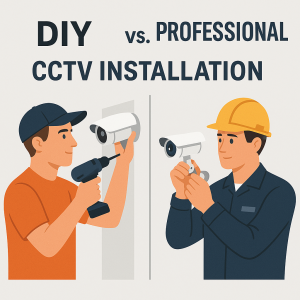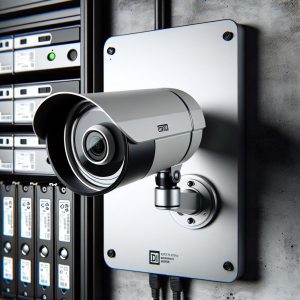Choosing the right home security system involves more than selecting cameras and sensors. To fully protect your property, it’s essential to consider the specific features that align with your needs. With a vast range of options available, understanding which features matter most can help you make an informed choice. This guide highlights the top features to look for in a home security system, from remote monitoring and motion detection to smart integration and environmental sensors.
1. Remote Monitoring and Control
Remote monitoring and control are among the most popular features in modern security systems. This capability lets you manage your security setup from anywhere using a smartphone, ensuring peace of mind when you’re away.
Benefits:
- 24/7 Accessibility: Check live feeds, arm or disarm the system, and control devices from any location.
- Real-Time Alerts: Get immediate notifications for events like motion detection or entry breaches.
2. High-Definition Security Cameras
High-definition (HD) security cameras provide clear, detailed footage that makes it easier to identify faces, license plates, and other critical details. Many modern cameras come with resolutions of 1080p or even 4K, ensuring reliable image quality.
Features to Look For:
- Resolution: Opt for 1080p or 4K cameras for sharper images.
- Night Vision: Infrared or color night vision provides clarity in low-light conditions.
- Wide-Angle Lens: Covers a larger area, reducing the need for multiple cameras.
3. Motion Detection
Motion detection is essential for alerting you to movement within the camera’s range. Advanced systems allow customizable detection zones and sensitivity settings to reduce false alerts, helping you focus on specific areas.
Benefits:
- Customizable Zones: Set up monitoring for specific areas to avoid unnecessary alerts.
- Reduced False Alarms: Adjust sensitivity to prevent alerts from non-threatening movements, like pets or passing cars.
4. Smart Home Compatibility
Many security systems are now compatible with popular smart home platforms such as Amazon Alexa, Google Assistant, and Apple HomeKit. This compatibility lets you integrate your security system with other smart devices for streamlined control and automation.
Popular Integrations:
- Voice Control: Use voice commands to arm/disarm the system or view camera feeds.
- Automation: Set up automated security actions, such as locking doors or turning on lights at certain times.
5. Two-Way Audio
Two-way audio enables you to communicate with visitors, delivery personnel, or even potential intruders via security cameras or video doorbells. This feature is useful for screening visitors and responding to unexpected activity.
Advantages:
- Remote Communication: Speak with visitors directly through your app.
- Deterrent Effect: Intruders may be deterred when they hear a live voice.
6. Professional Monitoring Services
Professional monitoring services add a layer of security by having a third-party team oversee your system and notify authorities if necessary. This is ideal for those who want continuous oversight without constantly checking their system.
Benefits:
- Quick Response: Monitors can immediately contact authorities in case of an emergency.
- Peace of Mind: Knowing your home is under professional surveillance offers added reassurance.
7. Environmental Sensors (Smoke, Carbon Monoxide, Water Leak Detection)
Environmental sensors provide protection beyond intrusion detection by monitoring for hazards like smoke, carbon monoxide, and water leaks. These sensors make it easier to guard against fires, toxic gas exposure, and potential water damage.
Advantages:
- Early Detection: Get alerts for environmental hazards before they escalate.
- Comprehensive Safety: Protects your home from non-intrusion risks, adding a layer of security.
8. Backup Power and Cellular Connectivity
Security systems need to remain operational, even during power outages. Backup power and cellular connectivity ensure your system stays active in the event of an outage or network failure, which is crucial in areas prone to storms.
Key Features:
- Battery Backup: Keeps the system running during power failures.
- Cellular Backup: Allows the system to send alerts even if Wi-Fi is unavailable.
9. Video Doorbells
Video doorbells provide front-door security, allowing you to see and communicate with visitors before opening the door. They also record activity, making it easier to monitor package deliveries and detect suspicious behavior.
Benefits:
- Convenient Visitor Screening: Check who’s at the door remotely.
- Delivery Monitoring: Keep an eye on packages and deter potential theft.
10. Customizable Notifications and Alerts
Customizable notifications let you decide when and how you receive alerts. Most systems allow you to filter notifications for specific events, such as door openings or motion detection, so you’re only notified about relevant activity.
Advantages:
- Focus on Important Events: Avoid notification overload by setting filters for essential alerts.
- Real-Time Response: Get immediate alerts for high-priority events.
11. Remote Access for Multiple Users
A security system with remote access for multiple users is essential for households with several family members. Each user can monitor the system, receive alerts, and control security features from their device.
Benefits:
- Shared Responsibility: All users can monitor the system and respond if necessary.
- Access Control: Some systems allow you to customize permissions for different users.
12. User-Friendly Mobile App Interface
A user-friendly mobile app serves as the control center for your security system. Look for apps that are intuitive, easy to navigate, and provide quick access to features like camera feeds and notifications.
Features to Look For:
- Clear Layout: Easy access to cameras, alarms, and alerts.
- Fast Loading: Reduces delays when you need quick access to your system.
- Customization Options: Allows personalized settings for each user.
13. Smart Locks and Keyless Entry
Smart locks add convenience and control by allowing keyless entry and remote door management. These locks let you monitor door activity, set temporary access codes, and manage access without physical keys.
Benefits:
- No Need for Physical Keys: Reduces the risk of lost or stolen keys.
- Access Control: Easily monitor and manage who enters your home.
Conclusion
Choosing a home security system with the right features is essential for creating a safe environment. From remote monitoring and HD cameras to smart home compatibility and environmental sensors, each feature enhances the system’s effectiveness and provides peace of mind. Prioritizing the features that align with your needs will help you build a reliable, user-friendly security setup.
By investing in a security system with comprehensive features, you’re taking a critical step toward protecting your home and loved ones.





